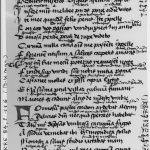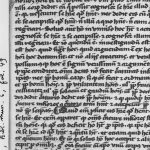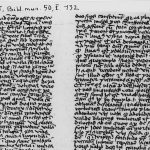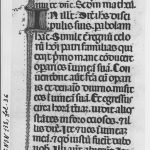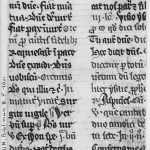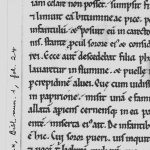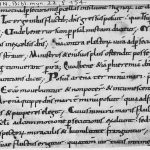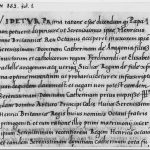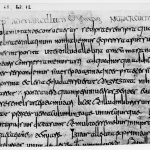The images of the training set are tagged according to 12 labels. The division of scripts is based on morphological differences and allographs, as defined in standard works on Latin scripts [25], [26].
The following script types are described:
- Caroline:
- Minuscule script (ascenders and descenders clearly between the lines)
- uncial roundeda, half-uncial d, g with a small round eye; f, i, r and long s may have (short) descenders, flat-topped t;
- Cursiva:
- single-compartment a; f and long s below the line; loops on ascenders (b, h, k, l);
- Half-Uncial:
- Minuscule script (ascenders and descenders clearly between the lines)
- mainly open letter a; vertical d,3 or z-shaped letter g; minuscule form of m (three minims); both N and n may be used; mostly long s (ſ = U+017F); t with loop on the left;
- The corpus encompasses more or less cursive types of half-uncial scripts
- Humanistic: Imitated from Caroline scripts, with dotted i
- Humanistic Cursive: Humanistic script with cursiva forms and ‘italic’ slant
- Hybrida:
- single-compartment a; f and long s below the line; loopless ascenders (b, h, k, l);
- Praegothica:
- vertical uncial a; half-uncial d and uncial d; f and long s stand on the line; long s and round s may be used simultaneously
- script based on Caroline type, characterized by its lateral compression (narrower letters and fusions) and regularization of strokes, esp. equalizing tendency in the treatment of feet.
- Semihybrida: Hybrida with irregularly loopless ascenders (b, h, k, l);
- Semitextualis: Textualis (cf. infra) with single-compartment a
- Southern Textualis (Rotunda):
- two-compartment a; f and long s on the line; loopless ascenders (b, h, k, l)
- This script is the Mediterranean forms of Textualis. It is characterized by the roundness of its bows, visible especially in b, c, d, e, h, o, p, q and round r
- Textualis:
- two-compartment a; f and long s on the line; loopless ascenders (b, h, k, l);
- Uncial:
- Mostly capital script
- Almost no ascender or descender (d, F, h, p, q overlap only minimally)
- Reduced A; d with shaft sloping to the left; rounded, often opene/Eand M;
2 Ideal models of the script types









4 Samples from the CLaMM data set
[25] B. Bischoff, Paläographie des römischen Altertums und des abendländischen Mittelalters, 4., durchgesehene und erw. Aufl. Berlin: E. Schmidt, 2009.
[26] A. Derolez, The Palaeography of Gothic Manuscript Books from the Twelfth to the Early Sixteenth Century. Cambridge: Cambridge University Press, 2003.


